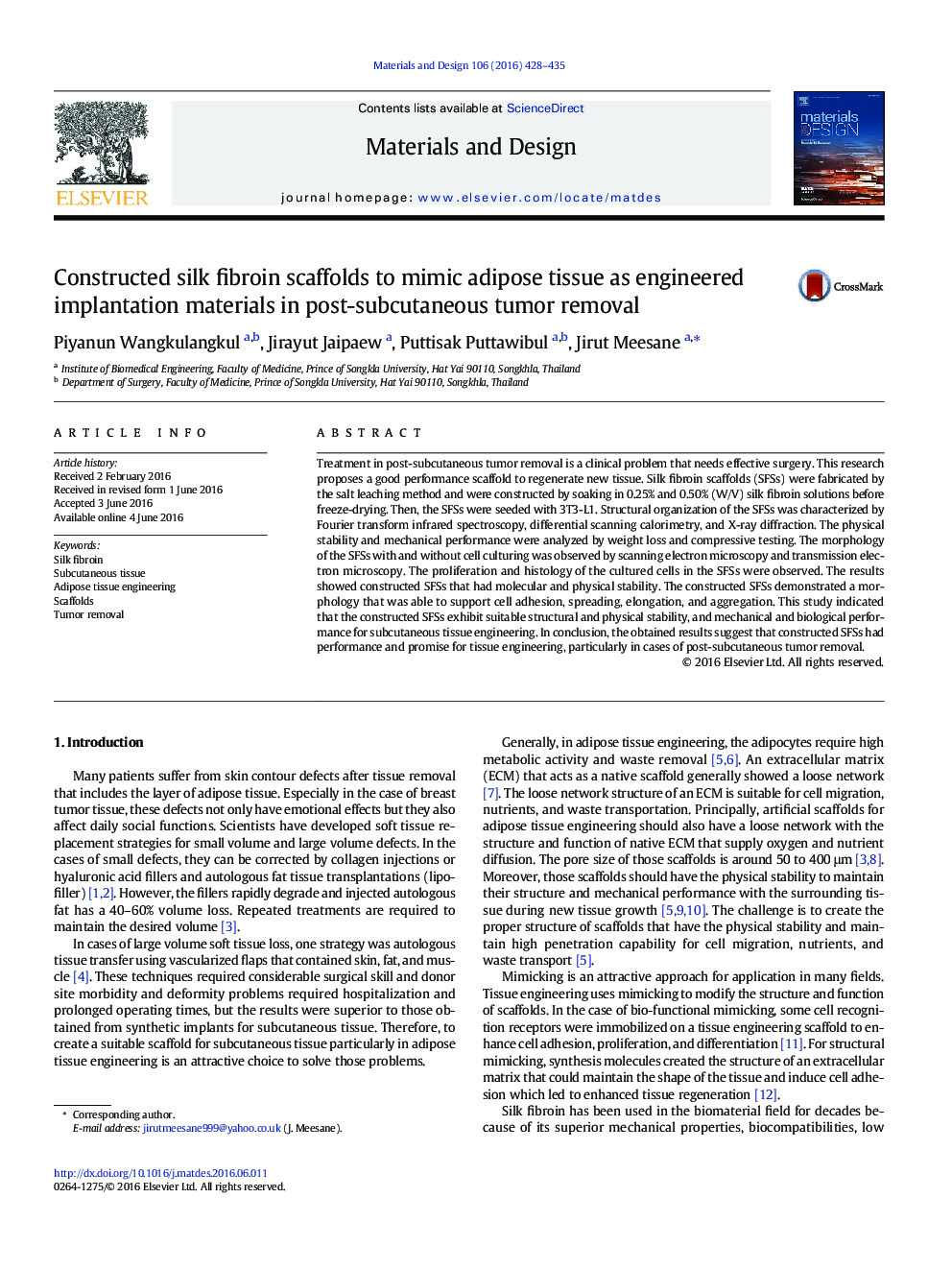| Article ID | Journal | Published Year | Pages | File Type |
|---|---|---|---|---|
| 827904 | Materials & Design | 2016 | 8 Pages |
•The scaffolds showed morphological structure as extracellular matrix.•The scaffolds had suitable structural and physical stability for adipose tissue.•The scaffolds had mechanical performance as adipose tissue.•The scaffold showed proposed biological performance for subcutaneous tissue removal.
Treatment in post-subcutaneous tumor removal is a clinical problem that needs effective surgery. This research proposes a good performance scaffold to regenerate new tissue. Silk fibroin scaffolds (SFSs) were fabricated by the salt leaching method and were constructed by soaking in 0.25% and 0.50% (W/V) silk fibroin solutions before freeze-drying. Then, the SFSs were seeded with 3T3-L1. Structural organization of the SFSs was characterized by Fourier transform infrared spectroscopy, differential scanning calorimetry, and X-ray diffraction. The physical stability and mechanical performance were analyzed by weight loss and compressive testing. The morphology of the SFSs with and without cell culturing was observed by scanning electron microscopy and transmission electron microscopy. The proliferation and histology of the cultured cells in the SFSs were observed. The results showed constructed SFSs that had molecular and physical stability. The constructed SFSs demonstrated a morphology that was able to support cell adhesion, spreading, elongation, and aggregation. This study indicated that the constructed SFSs exhibit suitable structural and physical stability, and mechanical and biological performance for subcutaneous tissue engineering. In conclusion, the obtained results suggest that constructed SFSs had performance and promise for tissue engineering, particularly in cases of post-subcutaneous tumor removal.
Graphical abstractFigure optionsDownload full-size imageDownload as PowerPoint slide
